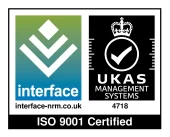In today’s manufacturing, accuracy, efficiency, and durability are all vital. You may have seen the Vaski punching and bending machine if you are looking into cutting-edge fabrication technologies. But what is it exactly, and why are industrial manufacturers finding it more and more appealing?
Throughout this guide, we’ll talk about the most important parts of these machines, such as their uses, benefits, and functions. Whether you’re a novice or a seasoned professional, this article will assist you in comprehending how Vaski machines are revolutionising the metal manufacturing process.
What is a Vaski Punching and Bending Machine?
A highly effective metal fabrication tool for precisely punching holes and bending sheet metal is a Vaski punching and bending machine. These devices combine two fundamental operations: bending (forming metal into desired angles or curves) and punching (making holes and shapes).
Key Components of a Vaski Machine
To better understand how it works, let’s explore its main components:
- Punching Unit: This section applies force to create holes or cutouts in metal sheets.
- Bending Unit: Designed to form metal into precise angles and curves without weakening the material.
- Control Panel: A digital interface that allows operators to program and monitor operations.
- Frame Structure: The robust framework supports the machine’s operations and ensures stability.
How Does a Vaski Punching and Bending Work?
For accuracy in every action, these machines use computer numerical control (CNC) technology. Inputs from operators define the design parameters, and the machine does the necessary punches and bends automatically, reducing waste and human error.
Step-by-Step Process
- Material Placement: A sheet metal piece is positioned on the machine.
- Programming: Operators input specific measurements and instructions via the control panel.
- Punching Process: The machine punches holes, shapes, or patterns in the metal.
- Bending Process: The metal is subsequently formed into the desired shape by the bending unit.
- Final Inspection: The finished product is inspected for quality and accuracy.
Benefits of Using a Vaski Punching and Bending Machine
These machines offer numerous advantages, making them an essential tool for manufacturing industries.
- High Precision and Accuracy: Utilising computer-controlled technology, Vaski machines guarantee very precise punching and bending, lowering mistakes and wasteful material use.
- Increased Efficiency: These devices increase output and decrease production time by combining two processes into one, which results in economical manufacturing.
- Versatility: These machines are beneficial for many industries because they can work with different metals, like mild steel, stainless steel, and aluminium.
- Cost Savings: Businesses can cut their operational cost expenses a large amount because they use less manual labour and waste fewer materials.
- Improved Safety: Automation keeps people from having to directly handle dangerous tools, which makes the workplace safer.
Applications of Vaski Punching and Bending Machines
These machines are widely used across multiple industries:
- Automotive Industry: They are used by manufacturers to make precise parts for cars, like body panels and structural reinforcements.
- Aerospace Engineering: Aerospace companies need very accurate metal parts, which is why Vaski machines are perfect for making parts for aeroplanes.
- Construction and Architecture: From metal frameworks to customised steel structures, these machines help shape various building materials.
- Electrical Enclosures: They are used in fabricating custom metal enclosures for electrical panels and industrial cabinets.
How to Choose the Right Vaski Punching and Bending Machine
If you’re considering investing in a Vaski machine, here are key factors to keep in mind:
- Production Volume: Assess your production needs. High-volume manufacturing requires advanced automated models.
- Material Compatibility: Ensure the machine is compatible with the types of metals you commonly use.
- Software and Controls: Opt for a machine with an easy-to-use control system that integrates well with your existing processes.
- Space and Layout: Check if the machine fits within your facility layout without disrupting workflow.
- Budget Considerations: Compare different models to find the best value for your investment while maintaining quality and efficiency.
Maintenance and Care for Vaski Machines
To ensure optimal performance, follow these maintenance tips:
- Regular Cleaning: Keep punching and bending units free from debris.
- Lubrication: Apply lubricants to moving parts to reduce friction and wear.
- Software Updates: Update the control software for improved efficiency.
- Routine Inspections: Check for worn-out components and replace them as needed.
Future Trends in Punching and Bending Technology
As technology advances, Vaski punching and bending machines continue to evolve. Some emerging trends include:
- AI and Machine Learning Integration: Enhanced automation and predictive maintenance.
- Energy-Efficient Models: Reduced power consumption and sustainable production.
- Customised Fabrication: Greater flexibility to cater to bespoke manufacturing needs.
Taking Your Metal Fabrication to the Next Level
Modern fabrication is revolutionised by a Vaski punching and bending machine. Because of its capacity to increase accuracy, boost productivity, and reduce expenses, it is a priceless tool for manufacturers in various sectors. Investing in this cutting-edge technology has the potential to completely transform your business, regardless of how big or small your production facility is.
Consider incorporating Vaski machines into your workflow if you’re looking into industrial automation solutions for better quality and more output.
Milly Edwards
Sales and Marketing Executive: Responsible for creating content for ILF's social media channels, website, print media and promotional work.








